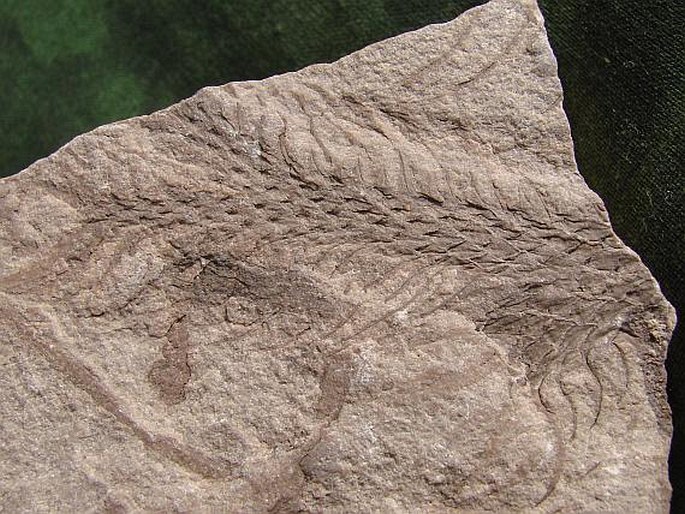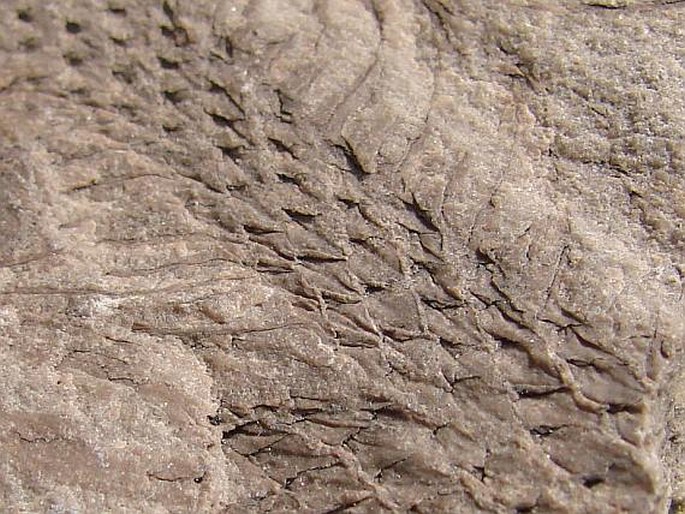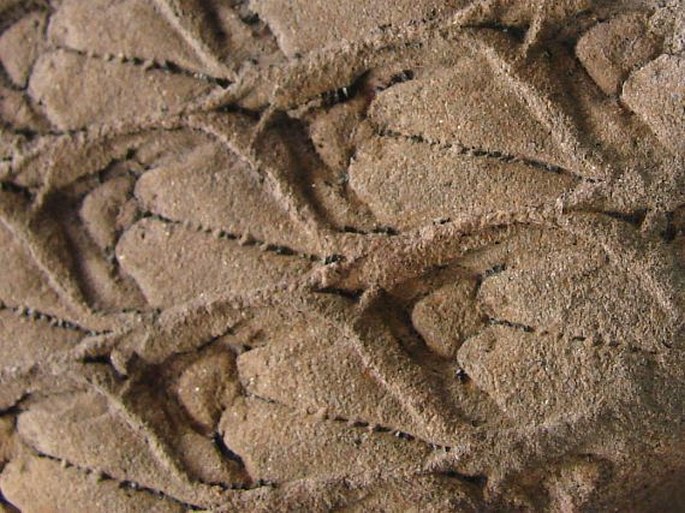Family: Lepidodendraceae

Distribution: An extinct lycopod. The first plants of this group appeared in the lower Devonian (possibly Silurian). Lycopods reached their greatest development and diversity in the Carboniferous (about 330 million years ago) – they grew to the size of trees. Most of these arborescent lycopods became extinct in the end of Permian, some of them survived into the Mesozoic Era. The herbaceous family Isoëtaceae – commonly known as the Quillworts – is the only living representative of this a formerly rich group. The oldest „modern“ quillwort is known from the Triassic Period (Isoëtes beestonii).
Ecology: Grew in the tropical swamps and marshes of Eurasia and North America – created deposits of bituminous coal.
Description: Lepidodendrales were arborescent plants and reached a height of 30–40 m, trunk had diameter about 2 m. Stems were usually dichotomy branched, leaves were spirally arranged on the stem, bark with regular scars after deciduous leaves – in this genus (Lepidodendron) in the shape of the diamond (rhombus). Cones grew on the top of the branches.



These fossils come from Czechia, Kladno-Otvovice (Carboniferous) and Radnice (Lepidodendron aculeatum – Carboniferous).


